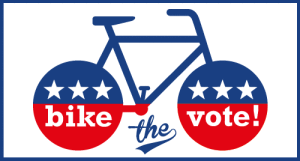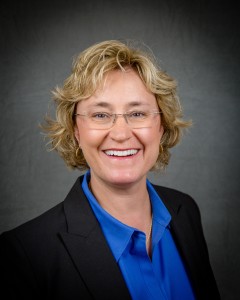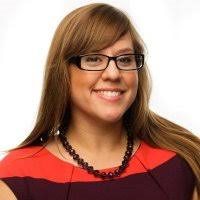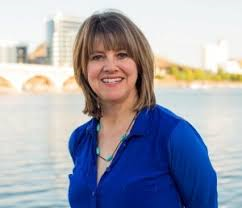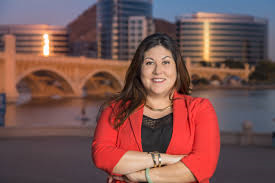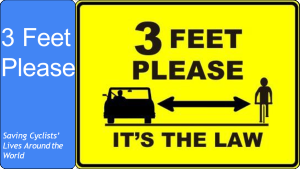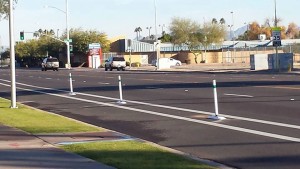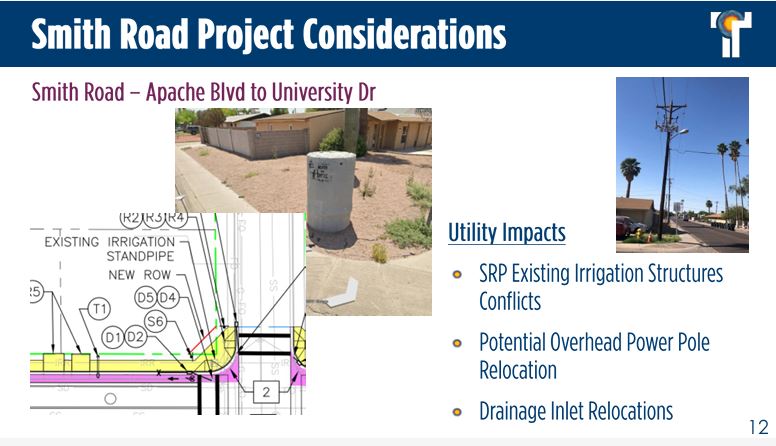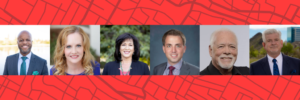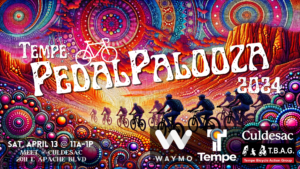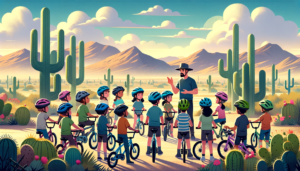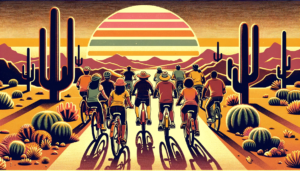Tempe City Council Candidates Respond to Your Questions about Cycling Infrastructure and Safety
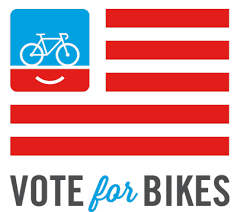
Tempe Bicycle Action Group recently asked Tempe City Council candidates their thoughts on some important topics in the bike community.
This year there are 3 openings on the Tempe City Council, with 6 candidates. Candidates include Jennifer Adams, Robin Arredondo-Savage, Sarah Kader, Lauren Kuby, Justin Stewart, and Genevieve Vega. Ballots have been sent out today and can be dropped off at ballot centers (City Hall and Tempe Public Library) between March 3-March 13, or mailed in by March 7.
TBAG sent all six candidates the same two questions regarding safe cycling in Tempe, and we have included their responses below, so that the cycling community can make informed voting decisions on the issues that matter to them. The questions we offered to the candidates were:
1. The Vision Zero transportation initiative encourages cities to work towards a goal of zero traffic fatalities, and has been adopted by major multimodal transportation hubs including New York City, Philadelphia, Seattle, Silicone Valley, and worldwide. In 2016, Arizona ranked 3rd in the country for pedestrian deaths according to the Governors Highway Safety Association, and according to the Highway Loss Data Institute, in 2016 there were 865 fatal vehicle crashes resulting in 962 deaths. Tempe recently began developing a Vision Zero initiative, but it will require a real commitment and strategies to achieve zero traffic deaths.
As a Tempe City Council Member, do you feel Vision Zero is attainable for Tempe, and what will you do to promote a goal of zero traffic fatalities for our residents?
2. How does multimodal transportation, including using bicycles for commuting, recreation and sport, fit into Tempe’s General Plan 2040? And what is your personal vision for how bicycling fits into our community?
The candidates’ replies are below, unedited. TBAG has also invited all candidates to speak at the beginning of our next monthly meeting on Sunday, February 25, at Boulder’s on Broadway at 7PM. Robin Arredondo-Savage did not reply.
Jennifer Adams
1. Your first questions is actually two questions, so let me address each of these separately:
As a Tempe City Council member, if elected I would hope to begin the process of developing Zero Vision. First, the program reframes traffic deaths as preventable. It focuses on where the system failures are, which means that a city task force must be created and charged with leading a study and to implement actions to prevent traffic deaths. The Mayor should lead the players, along with Transportation officials and related commissions, Fire and Emergency Services, Public Works, Disability Services groups and School Districts all at the table.
Each of these stakeholders would commit to a representative and inclusive process. This would ensure equitable outcomes with measurable benchmarks to ensure safe outcomes for drivers, pedestrians and bicyclists. The process should focus on systems-based approaches that are built on environmental systems which influence and emphasize that traffic losses are indeed preventable. A great deal of data-gathering will assist in understanding these traffic issues.
Finally, the process must be transparent to the community and engage the public with workshops, online surveys and public meetings.
So, yes, I would promote the Zero Vision effort with the Mayor and Council as well as the above-mentioned stakeholders and the public. It must also be noted that this is not a short-term project; setting this process in motion will require a great deal of time and cost. The city council will need to identify the necessary budget and prioritize the project to make it a reality.
2. Your second question is again two parts, so I will address each part separately:
Multimodal transportation involves two or more modes of transportation for the movement of goods. In the context of multimodal in Tempe, we have goods being moved in all traffic corridors by transport trucks, package delivery (UPS; FEDEX etc) and automobile. For our focus, we are concerned with safe movement of pedestrians, buses (people movers) and bicyclists. All three of these arenas of movement are a part of the Tempe General Plan 2040 within the Circulation Chapter. The chapter identifies bike routes and facilities, pedestrian ways, arterial and collector streets, transit service areas and routes. It also covers rail, freight and air transport as related to land use in Tempe.
The Plan establishes bikeway goals that will expand and enhance bicycle travel in the City. The objective is to establish safe and convenient access between neighborhoods, schools, parks, businesses, and other destinations. Bicycle option include: Sharrows, on streets too narrow for bike lanes; Bike Boulevards and Bike Share, that have already been implemented; Cycle Tracks that physically separate bikes from traffic with barriers; and Buffered Bicycle Lanes.
My personal view of how bicycling fits into the community is that bicycling is growing every year. More students at ASU are biking. Many more people are using the Western Canal and connecting bike-lane streets to reach work, either in Tempe’s downtown or to ASU Research Park, Discovery Business Park and to a variety of small businesses. New businesses like the Tempe Public Market Café even added facilities for patron bike parking. These kinds of initiatives not only satisfy present riders, but also encourage new riders to use bike lanes and become neighborhood biking enthusiasts.
Sarah Kader
1. I am running for Tempe City Council to put Tempe Families First, and that means that the Vision Zero initiative must be a part of how we go forward. All families and groups in Tempe should feel safe while they are in transit, not worrying about potential harm from other motorists. We should strive for a strategic, achievable plan with a long term goal to build a smart and safe City that keeps residents safe.
Part of the way that this can be achieved is through coalition building and strong advocacy. Too often, animosity between different stakeholders can delay positive policy outcomes and social change in the community, including changing the conversation around issues throughout the broader Tempe community. A large piece of my work has been to build coalitions at the State Legislature for the passage of strong legislation around poverty and disability rights advocacy. I know how hard it is to meet with people with whom you disagree, but finding common ground can be both surprising and rewarding, and ultimately benefit the folks we are elected to serve. To get a Vision Zero initiative in place and working, that is what it is going to take, and I am committed to that work as I have been for my entire career.
2. Multimodal transportation is enshrined into the Tempe General Plan for 2040, which was built with input from residents in a number of areas. I have read the entire plan, and really see strong transit systems as the key to a strong, interconnected community. Bicycles are not only good for the environment, but they bring people together for a common purpose, as evidenced by the existence of this group.
For many communities that cannot afford a car, public transit does not always fit their specific needs, no matter how hard we try. Bicycling is a cost-effective way to move people and goods to jobs, shops, and needed public services. For low income communities, young people, and people of color, this is even more important as empowering all of Tempe will take access to the ability to even get to that job interview, grocery store, or a doctor’s appointment in the first place. This is why cycling is one major plank of a broader transportation vision that needs to be implemented throughout the City in line with the City’s general plan.
Lauren Kuby
1. On Thursday, February 8th, we formally adopted the Vision Zero framework. The next step is to develop a Vision Zero action plan. For this, we will be pulling together a stakeholder group. Staff is now researching what other Vision Zero cities have done in order to develop an achievable Vision Zero action plan. We need to look at spotlight cities like New York City, Philadelphia, and Seattle and learn from what they identify as their “success factors” or “best practices” and then see which of these practices and be scaled and transferred to here to Tempe.
Vision Zero is absolutely attainable for Tempe. As a councilmember who champions multimodal transportation, I would approach this necessary from a few distinct intervention points. First and foremost, we need effective infrastructure that supports safety and cycling. The best approach to take, as we know, are physical divides when it comes to infrastructure. This best practice, however, is not always possible in all locations at the moment (not when we have bike advocates who don’t walk (or bike) the talk). Regardless; we need to advocate, implement and then defend an integrated transportation infrastructure.
Because new infrastructure is not always a timely solution, I believe the 2nd prong in our approach needs to be improving our multimodal transportation literacy as a community. This means teaching drivers (via driver’s education, on the city website, through our law enforcement officials) and our cyclists (through schools, the city website, our law enforcement officials, the neighborhood associations) how to share the road.
We also need to work with the experts at ASU who are eager to offer up workshos and entire semester classes focuseed on creating “complete streets” and attaining Vision Zero.
2. Hundreds, if not thousands, of Tempe residents participated in the creation of General Plan 2040, which called for street diets (removing a lane of traffic to allow for the expanded bike insfrastructure) and envisioned a 20-minute city, and an integrated multi-modal transportation plan. It is no secret that Tempe has traffic issues and that we expect to only get denser in the years to come. This reality means we need to also be investing in and speaking to our neighboring cities about rapid public transit that travels north-south (from Scottsdale to Chandler) and about gettingmore people out of cars and onto trams, rails, bikes. This includes possibly creating districts such as “eco-zones” or pedestrian-only parts of the city.
I ride my bike almost every day to work and I often wonder what traffic would be like with no bikes. Then, our residents would have something to complain about!
As a councilmember, my goal is to support infrastructure that makes bikes and public transit the faster, safer, cheaper option for getting around Tempe. I envision a Tempe where biking is so safe, so protected, that people won’t need to even wear helmets (I can dream. can’t I?), where bike tracks are ubiqitous, shaded with lush desert trees, and the increased use of e-bikes across our city. I envision Tempe as the Copenhagen of the US.
Justin Stewart
1) I don’t think that it should necessarily be about if Vision Zero is attainable, but it should be framed that zero traffic deaths it is only the truly acceptable solution for us as humans. Each human life is extremely precious, and we as a municipality need to make sure that every single life is protected in every way possible and in the safest manner. As a Tempe City Council Member I will continue to communicate and help educate the population that every single life in Tempe is important. It is important to humanize the aspect of city life. In a large city, sometimes that gets lost, and it is easy to forget that we are someone else’s child, or mother, or father, or friend. We need to take that compassionate approach and help educate our residents that we are all indeed someone important in Tempe. I believe in working with our State legislature and other valley cities as well, to work on better ways to create roadways, educate both automotive drivers and bicyclists about proper safety etiquette, and ways the cities can work together to promote road safety. With such collaboration, we could even possibly see other cities want to adopt our goal and help put safety first for all residents.
2) In the 2040 General Plan there are specific mentions of ideas and methods that can be put forward with in the City of Tempe in regards to bicycling. There are some very creative ideas that I think we need to put some city funding into to explore, in order to get to the 2040 General Plan’s recommendations. The ideas of cycle tracks, sharrows, bike boxes, and bike boulevards are mentioned in discussed in the 2040 plan, and I think we need to follow other visionary cities world wide and learn from their techniques with these items and do our very best to find ways to fit these recommendations into the city. I believe that the 2040 plan has laid down some great options and visions for the City of Tempe, especially with concerns of connecting “the last mile”. It is just going to take some further investment to truly look at these options. As a Tempe City Council Member I would push for funds to investigate these options, and making it a goal to get to 2040 plan recommendations. Even if the City of Tempe itself has to find creative ways to find those funds. I personally think that Tempe must be multimodal, especially with the growing concerns of climate change and the direct effects on the whole Metro-Phoenix area. As I have stated, I would be willing to talk to other valley cities and try to form some type of pact or valley wide working group to help all the cities battle climate change and be prepared for climate change.
Genevieve Vega
1. I believe Vision Zero is attainable with the right leadership in place. I’ve been publicly advocating for better bike and pedestrian crossings in our busiest intersections (under or overpasses mainly) and am also a fan of buffered bike lanes and the design is a critical piece. I also think it’s important to use data to help with planning purposes and I’ve been pleased with the investment the city has made thus far in this area. Safety is one of the most sacred responsibilities of a Councilmember, and I would look for robust community engagement in the planning and implementation of Tempe’s Vision Zero commitment. I’m fortunate that I travel to my clients and I am constantly aware of how other cities invest in their bicycle infrastructure. We shouldn’t be afraid to adopt designs that work well in other cities!
2. I believe the 2040 General Plan was done with multi-modal transportation in mind, but that the General Plan is an intention and not intended to be written in stone. I think we did a good job of incorporating more bike- and pedestrian-friendly elements, but I don’t believe we’ve gone far enough. The only way we’ll alleviate traffic with increasing density is to encourage multi-modal transportation and to build an infrastructure that makes biking, walking, and transit the more desirable options. 6% of Tempe are avid cyclists yet we spend <1% of our infrastructure on it. I want bicycling to be safe enough so I have no hesitation sending my 7- and 15-year-old kids out on their bikes, and that my 68-year old dad can understand his responsibilities as a driver. We’ll only get this through intense public outreach and education.
These are big subjects and difficult to distill in a few sentences. I look forward to a robust conversation later this month!
Tempe Bicycle Action Group invites you to meet the candidates and hear their thoughts on cycling in Tempe at our next meeting:
Sunday, February 25, 2018
7pm
Boulders on Broadway, Tempe
